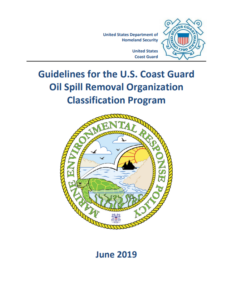The US Office of Marine Environmental Response Policy and the National Strike Force Coordination Center published new guidelines for the Oil Spill Removal Organization classification program.
The major revision in the 2019 guidelines focuses on realigning the classification program with applicable regulation provisions. The optional acceptable classification program has been replaced by the alternative compliance program and will provide a mechanism for reviewing any approved alternatives.
The alternative compliance program directly complies with the regulations and no longer allows waivers or alternatives not supported directly by the regulations.
Any deviations from the regulations that plan holders or OSROs believe are acceptable, based on their specific situation, should be processed through the established alternative compliance program
USCG said.
[smlsubform prepend=”GET THE SAFETY4SEA IN YOUR INBOX!” showname=false emailtxt=”” emailholder=”Enter your email address” showsubmit=true submittxt=”Submit” jsthanks=false thankyou=”Thank you for subscribing to our mailing list”]
Real world incidents have shown that this program contributes rapid and well-coordinated responses. The OSRO classification does not guarantee performance, nor does the use of a US Coast Guard-classified OSRO relieve plan holders of their responsibility to make sure response resources are adequate.
Plan holders must also ensure their contracted OSRO, regardless of classification, can meet their planning requirements.
Although participation in the OSRO classification is voluntary, it is crucial that participating OSROs ensure their resources are accurately reflected in the Response Resource Inventory (RRI) at all times.
The success of the program depends on the real-time capture of OSRO capabilities at their specified OSRO sites, which determines the classifications that plan holders cite in their response plans.
You may see more information in the PDF below
































































